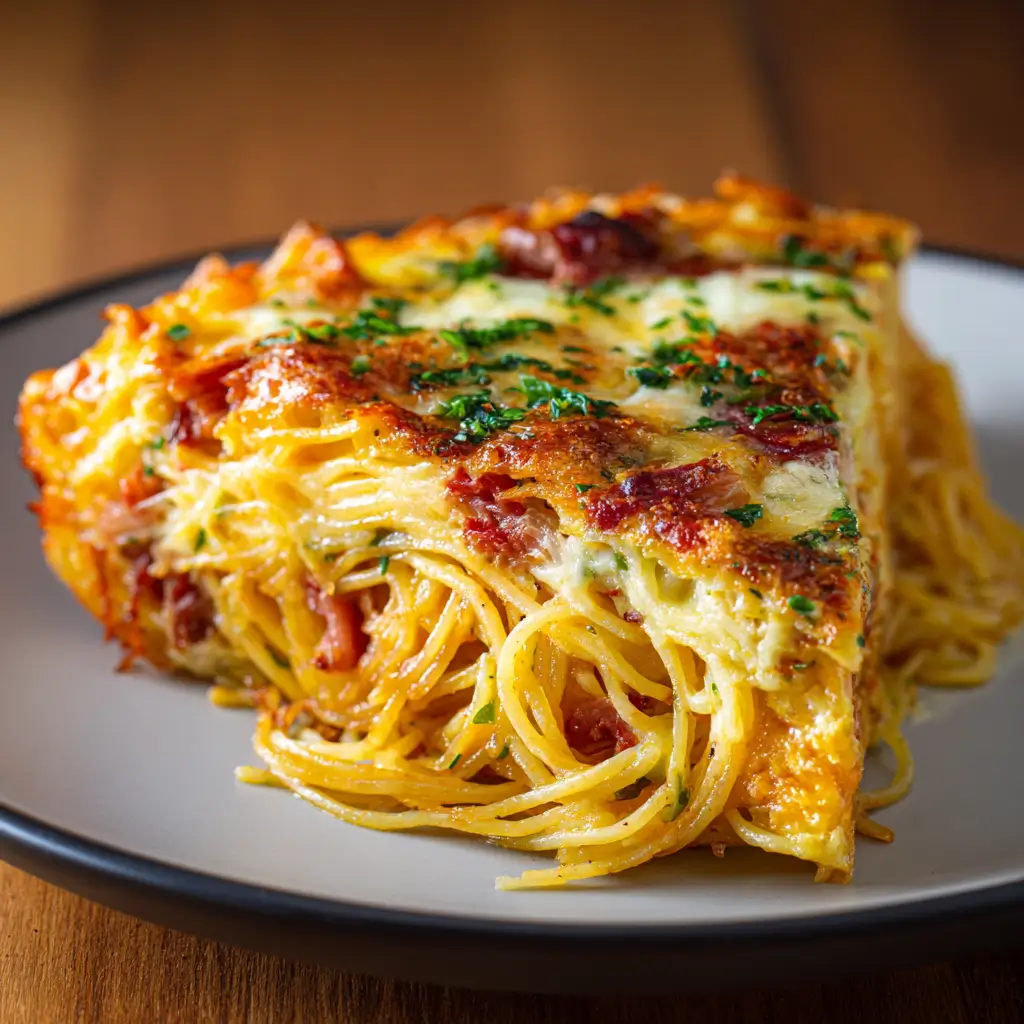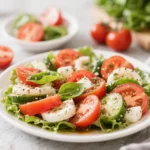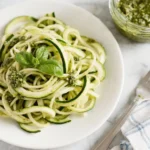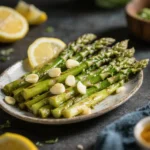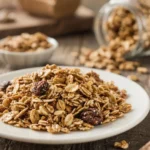Spaghetti Frittata: A Hearty Fusion of Italian Comfort Foods
The Spaghetti Frittata is a delicious and ingenious culinary hybrid that marries the best of two beloved Italian staples: spaghetti and frittata. This dish takes leftover spaghetti and transforms it into a savory, oven-baked or stovetop-fried masterpiece that’s rich in flavor, texture, and comfort. Perfect for breakfast, brunch, lunch, or even a light dinner, the Spaghetti Frittata offers versatility, convenience, and a satisfying way to minimize food waste. Whether you’re repurposing last night’s pasta or preparing a new batch specifically for this recipe, this dish promises to become a regular favorite in your kitchen.
The History of the Spaghetti Frittata
The origins of the Spaghetti Frittata lie in the resourceful traditions of Italian home cooking, where nothing goes to waste—especially food. In households across Italy, particularly in regions like Campania and Sicily, cooks have long practiced the art of transforming leftovers into entirely new dishes. The concept of the frittata, an open-faced Italian omelet similar to a crustless quiche, dates back centuries and was traditionally made with eggs and whatever ingredients were on hand—vegetables, cheese, cured meats, or even stale bread.
Using leftover spaghetti in a frittata likely emerged from post-meal creativity, especially after big family dinners centered around pasta. Over time, as families sought economical and flavorful ways to reuse cooked pasta, the idea evolved into a formalized recipe. Though not as widely documented as classic frittatas made with potatoes (like frittata di patate) or vegetables, the spaghetti version has gained popularity globally, especially in American-Italian households where large pasta meals are common. Today, the Spaghetti Frittata stands as a testament to ingenuity, sustainability, and the timeless appeal of simple, hearty food.
Ingredients Breakdown: What Goes Into a Perfect Spaghetti Frittata?
The beauty of the Spaghetti Frittata lies in its simplicity and adaptability. At its core, it requires only a few basic ingredients, but each plays a crucial role in achieving the right texture, flavor, and structure. Here’s a detailed breakdown of the essential components:
- Cooked Spaghetti: The star ingredient. Use plain, slightly undercooked (al dente) spaghetti for best results. Leftover spaghetti works perfectly, just make sure it hasn’t been tossed in heavy oil or sauce. About 2–3 cups of cooked spaghetti is ideal for a standard 8- to 10-inch frittata.
- Eggs: Large eggs act as the binding agent. Typically, 6–8 eggs are used depending on the size of your frittata. They provide lift, richness, and help create a custard-like interior when properly cooked.
- Cheese: Parmesan is most commonly used for its salty, nutty flavor and ability to melt beautifully. Other options include Pecorino Romano, mozzarella for gooeyness, or a blend of provolone and cheddar for a more robust taste. About ½ to ¾ cup grated cheese is recommended.
- Vegetables: Onions, bell peppers, mushrooms, spinach, zucchini, or cherry tomatoes add moisture, color, and nutrition. Sauté them first to remove excess water and deepen their flavor.
- Meats (optional): Diced ham, crumbled sausage, pancetta, or pepperoni can be added for a heartier, protein-rich version. Pre-cook any raw meats before mixing in.
- Garlic and Herbs: Fresh garlic enhances savoriness, while herbs like parsley, basil, oregano, or thyme bring freshness and aroma. Use about 2 cloves of minced garlic and 2–3 tablespoons of chopped fresh herbs.
- Salt and Pepper: Essential for seasoning. Be cautious with salt if using salty cheeses or cured meats.
- Olive Oil or Butter: Needed for greasing the pan and sautéing ingredients. Olive oil adds Mediterranean flavor, while butter gives a richer mouthfeel.
- Milk or Cream (optional): A splash (¼ cup) can be added to the egg mixture for a softer, fluffier texture, though traditionalists may omit it.
Step-by-Step Recipe: How to Make Spaghetti Frittata
Follow this detailed guide to create a golden, fluffy, and flavorful Spaghetti Frittata at home. This recipe serves 4–6 people and takes about 45 minutes from start to finish.
- Preheat the Oven (if baking): Set your oven to 375°F (190°C). If you plan to cook the frittata entirely on the stovetop, skip preheating but keep a lid nearby.
- Prepare Ingredients: Chop onions, bell peppers, spinach, or other vegetables. Mince garlic. Grate cheese. Beat eggs in a large bowl. Have all ingredients ready before cooking begins.
- Sauté Vegetables: Heat 2 tablespoons of olive oil in a 10-inch oven-safe skillet (cast iron or non-stick works best). Add onions and cook over medium heat for 3–4 minutes until translucent. Add garlic and other vegetables; cook another 5–7 minutes until softened. Remove excess moisture by cooking thoroughly.
- Add Meats (if using): Stir in pre-cooked diced ham, sausage, or pancetta. Cook for 1–2 minutes to warm through. Remove from heat and let cool slightly.
- Combine Spaghetti and Egg Mixture: In a large mixing bowl, combine cooked spaghetti, sautéed vegetables (and meats), grated cheese, fresh herbs, salt, and pepper. Pour beaten eggs (and optional milk/cream) over the mixture. Gently toss until everything is evenly coated. Avoid breaking the spaghetti too much.
- Transfer to Skillet: Wipe the skillet clean if needed, then reheat with 1 tablespoon of oil or butter. Pour the spaghetti-egg mixture into the hot skillet, pressing down lightly with a spatula to form an even layer.
- Cook on Stovetop: Cook over medium-low heat for 6–8 minutes, lifting the edges gently with a spatula to allow uncooked egg to flow underneath. The bottom should be golden brown and set.
- Finish in the Oven: Place the skillet in the preheated oven and bake for 12–15 minutes, or until the top is puffed, golden, and a knife inserted in the center comes out clean. Alternatively, cover with a lid and continue cooking on low heat for 10–12 minutes if avoiding the oven.
- Cool and Serve: Let the frittata rest for 5–10 minutes before slicing. This allows it to set and makes cutting easier. Serve warm or at room temperature, cut into wedges.
Tips for the Perfect Spaghetti Frittata
- Use Al Dente Pasta: Overcooked spaghetti turns mushy when mixed with eggs and baked. Ensure your pasta is firm enough to hold its shape.
- Dry Out Leftovers: If using refrigerated spaghetti, briefly reheat it in a pan to evaporate excess moisture, which can make the frittata watery.
- Avoid Excess Liquid: Vegetables like tomatoes and zucchini release water. Sauté them well or blot with paper towels before adding.
- Don’t Skip the Resting Time: Allowing the frittata to cool slightly ensures cleaner slices and prevents falling apart.
- Grease the Pan Well: Especially important with non-oven-safe pans or if you’re not using non-stick. Prevents sticking and ensures easy removal.
- Flip It (Optional): For a fully browned finish, slide the frittata onto a plate, place another pan on top, and flip it back into the pan to cook the other side for 3–5 minutes. Best done with confidence and care!
- Season Thoughtfully: Taste the mixture before pouring into the pan. Adjust salt, pepper, and herbs as needed, keeping in mind that cheese and meats may already be salty.
Variations and Customizations
The Spaghetti Frittata is incredibly versatile. Here are some creative twists to suit different tastes and dietary needs:
- Vegetarian Version: Skip the meat and load up on seasonal vegetables—spinach, mushrooms, roasted red peppers, artichokes, or asparagus.
- Gluten-Free Option: Use gluten-free spaghetti made from rice, corn, or chickpeas. Ensure all other ingredients are certified gluten-free.
- Keto-Friendly Adaptation: Replace spaghetti with spiralized zucchini (zoodles) or shirataki noodles. Increase cheese and healthy fats for satiety.
- Seafood Frittata: Add flaked cooked salmon, crab meat, or shrimp for a luxurious twist. Pair with dill and lemon zest.
- Mediterranean Style: Incorporate sun-dried tomatoes, kalamata olives, feta cheese, and oregano for a Greek-inspired flavor profile.
- Spicy Kick: Mix in red pepper flakes, jalapeños, or a dash of hot sauce for heat lovers.
- Cheese Lover’s Dream: Combine multiple cheeses—ricotta for creaminess, fontina for meltiness, and parmesan for depth.
- Breakfast Spaghetti Frittata: Include bacon, hash browns, and cheddar, serving it with hot sauce or salsa on the side.
Health Considerations and Nutritional Value
The Spaghetti Frittata can be both nutritious and balanced, depending on ingredient choices. Here’s a general nutritional overview per serving (assuming 6 servings):
- Calories: ~300–400 kcal (varies with cheese, meat, and oil)
- Protein: 15–20g (from eggs, cheese, and optional meat)
- Carbohydrates: 30–40g (mainly from spaghetti; reduce by using whole wheat or low-carb alternatives)
- Fat: 15–20g (mostly unsaturated from olive oil and eggs; saturated fat increases with cheese and meats)
- Fiber: 2–4g (higher if whole grain pasta and vegetables are used)
- Vitamins & Minerals: Rich in vitamin A (from eggs and veggies), vitamin B12, selenium, calcium (from dairy), and iron.
Health Tips:
- Use whole wheat or legume-based pasta for added fiber and complex carbs.
- Opt for reduced-fat cheese or use less cheese without sacrificing flavor.
- Increase vegetable content to boost nutrients and lower calorie density.
- Limited egg yolks? Use a mix of whole eggs and egg whites (e.g., 4 whole eggs + 4 egg whites).
- Avoid excessive salt, especially if using processed meats or canned vegetables.
- Cook with heart-healthy oils like extra virgin olive oil instead of butter.
Full Ingredient List
- 2–3 cups cooked spaghetti (about 8 oz dry)
- 6–8 large eggs
- ½–¾ cup grated Parmesan or Pecorino Romano cheese
- 2 tablespoons olive oil (plus extra for greasing)
- 1 small onion, finely diced
- 1 bell pepper, diced (any color)
- 1 cup chopped spinach or mushrooms
- 2 cloves garlic, minced
- ¼ teaspoon black pepper
- ½ teaspoon salt (adjust to taste)
- 2 tablespoons fresh parsley, chopped
- Optional: ½ cup diced ham, cooked sausage, or pancetta
- Optional: ¼ cup milk or heavy cream
Directions Recap
- Preheat oven to 375°F (190°C). Use an oven-safe skillet.
- Sauté onions, bell peppers, and other vegetables in olive oil until soft. Add garlic and cook 30 seconds. Stir in meats if using. Remove from heat.
- In a large bowl, combine cooked spaghetti, sautéed mixture, cheese, herbs, salt, pepper, and optional milk.
- Pour beaten eggs over the mixture and stir gently until well combined.
- Heat 1 tbsp oil in the skillet over medium heat. Pour in the spaghetti-egg mixture and press flat.
- Cook for 6–8 minutes until edges begin to set and bottom is golden.
- Transfer to oven and bake 12–15 minutes until center is firm and top is golden brown.
- Let rest 5–10 minutes before slicing into wedges. Serve warm.
Frequently Asked Questions (FAQ)
Can I make Spaghetti Frittata ahead of time?
Yes! Prepare it a day in advance and store it covered in the refrigerator. Reheat in the oven at 350°F for 15 minutes or enjoy cold—it’s delicious either way.
Can I freeze Spaghetti Frittata?
Absolutely. Wrap individual slices tightly in plastic wrap and foil. Freeze for up to 3 months. Thaw overnight in the fridge and reheat in the oven or microwave.
Why did my frittata turn out soggy?
Excess moisture from wet spaghetti or undercooked vegetables is the usual culprit. Always sauté veggies well and ensure pasta isn’t dripping wet.
Can I make this without an oven?
Yes. Cook on low heat with a lid for 12–15 minutes, checking occasionally. Or flip halfway through for even browning.
What can I serve with Spaghetti Frittata?
It pairs well with a green salad, roasted vegetables, sourdough toast, or a dollop of marinara sauce. For breakfast, try it with avocado or fruit.
Is Spaghetti Frittata suitable for meal prep?
Definitely. It holds up well in the fridge for 4–5 days and reheats beautifully. Great for quick lunches or breakfasts.
Can I use tomato sauce in the mixture?
Not recommended. Tomato sauce adds too much liquid and can make the frittata runny. However, you can serve it on the side or drizzle on top after baking.
How do I prevent sticking?
Use a well-seasoned cast iron or non-stick skillet and grease it generously with oil or butter before adding the mixture.
Summary
The Spaghetti Frittata is a flavorful, economical, and versatile dish that turns simple leftovers into a satisfying meal. Combining the heartiness of pasta with the richness of eggs and cheese, it’s perfect for any time of day.
Easily customized, nutritious, and ideal for meal prep, this Italian-inspired frittata celebrates creativity in the kitchen and the joy of zero-waste cooking.
